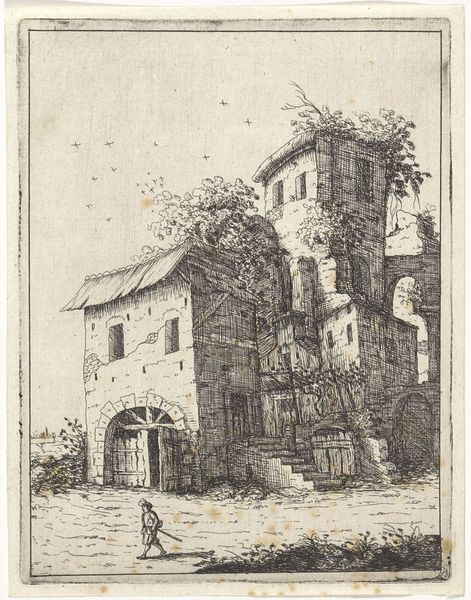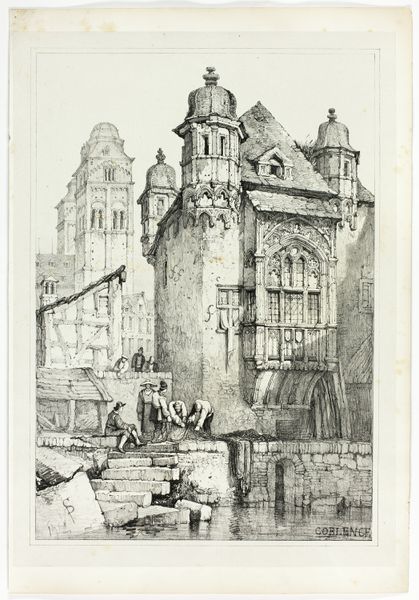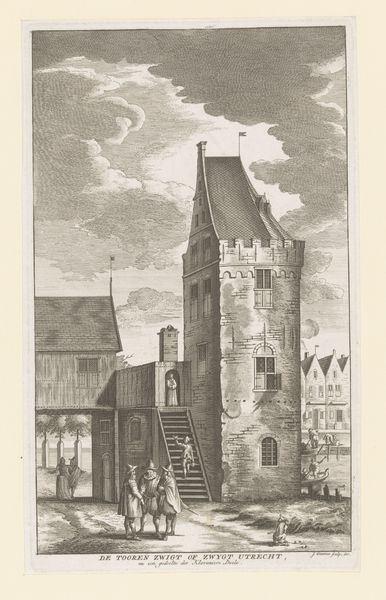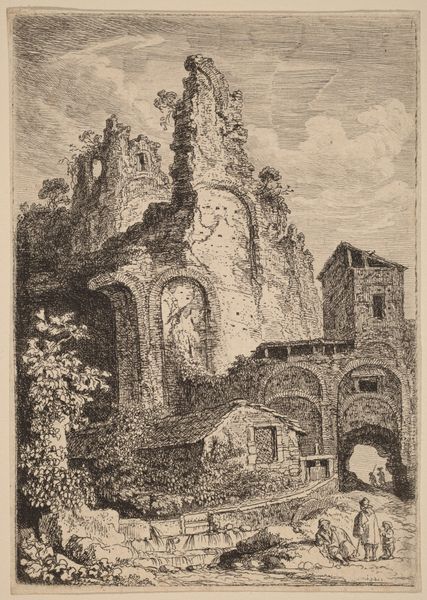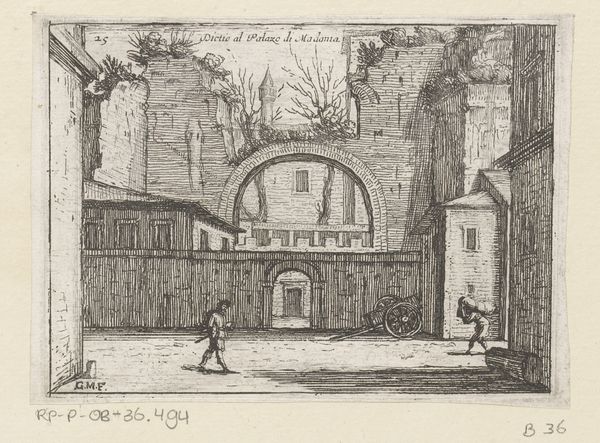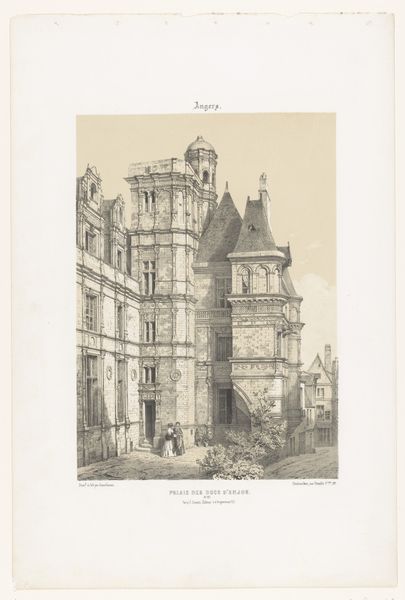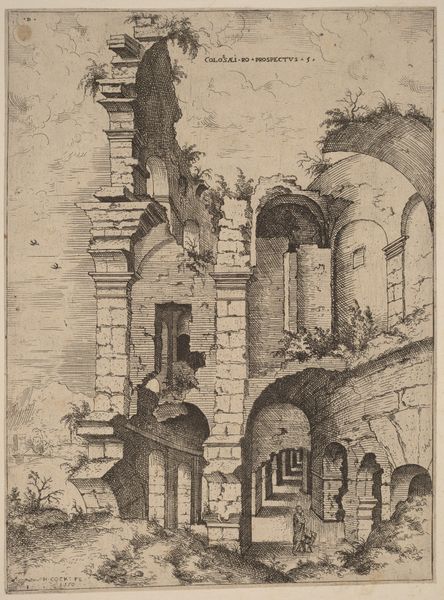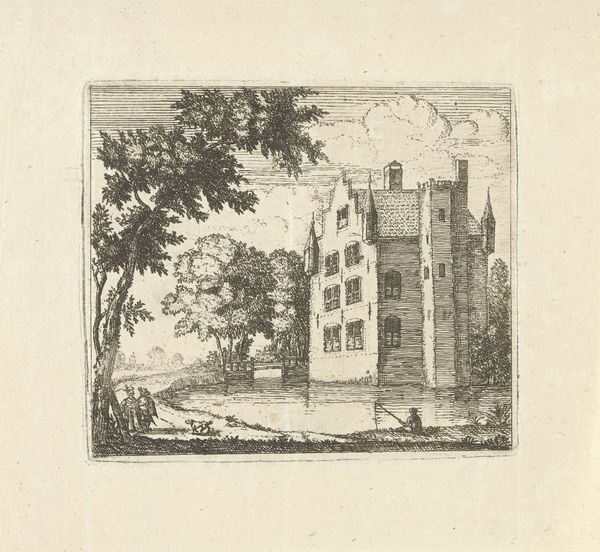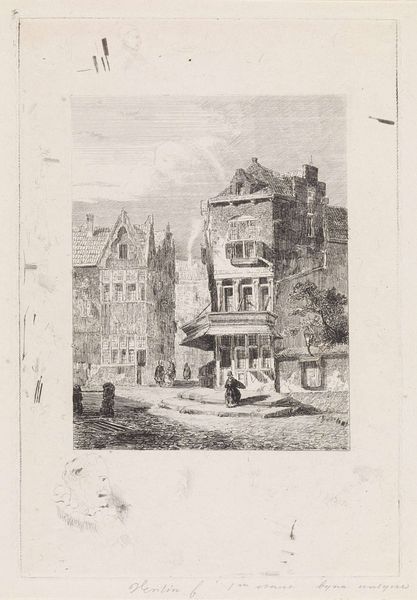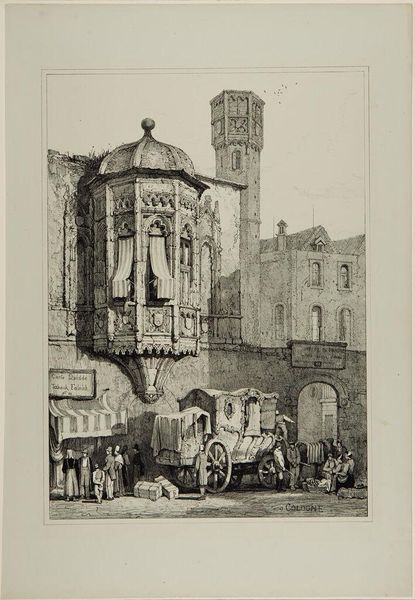
drawing, ink, pencil
#
drawing
#
pen sketch
#
landscape
#
ink
#
pencil
#
cityscape
#
genre-painting
#
realism
Dimensions: height 103 mm, width 73 mm
Copyright: Rijks Museum: Open Domain
Editor: Here we have "Een oude stadspoort," or "An Old City Gate," a drawing by F. Spyers created around 1842 to 1844, using pencil and ink. It depicts a crumbling city gate with figures passing through. The textures created by the ink seem rough, giving a stark realism to the wear and tear on the architecture. What do you see in this piece? Curator: I see the negotiation of material reality inherent in its very production. Spyers isn't just depicting a scene; he's engaging with the physicality of the city gate and the materiality of his artistic tools. Think about the source of the ink itself. From what material was it rendered, and by whom? The creation of the paper too, contributes meaning. Do you think the type of paper influences our understanding of the sketch? Editor: That's a great point! I hadn't considered the paper itself. The roughness of the sketch, the uneven application of the ink... maybe it's pointing to a lack of resources, a world where the materials aren't perfectly refined, mirroring the dilapidated state of the gate? Curator: Exactly! This isn’t simply a representation, it's an engagement with the material conditions of the time. The artist makes choices dictated by his economic surroundings as much as dictated by aesthetics. What can we learn from this tension? Editor: I never considered how much the raw materials could contribute to the artwork’s narrative. It shifts my focus from just looking at what's depicted to thinking about how and why it was made this way. Curator: Precisely. Thinking about the labor involved, the procurement of materials, the economics that impact artistic decisions – it all informs our understanding of the artwork far beyond the visual.
Comments
No comments
Be the first to comment and join the conversation on the ultimate creative platform.
